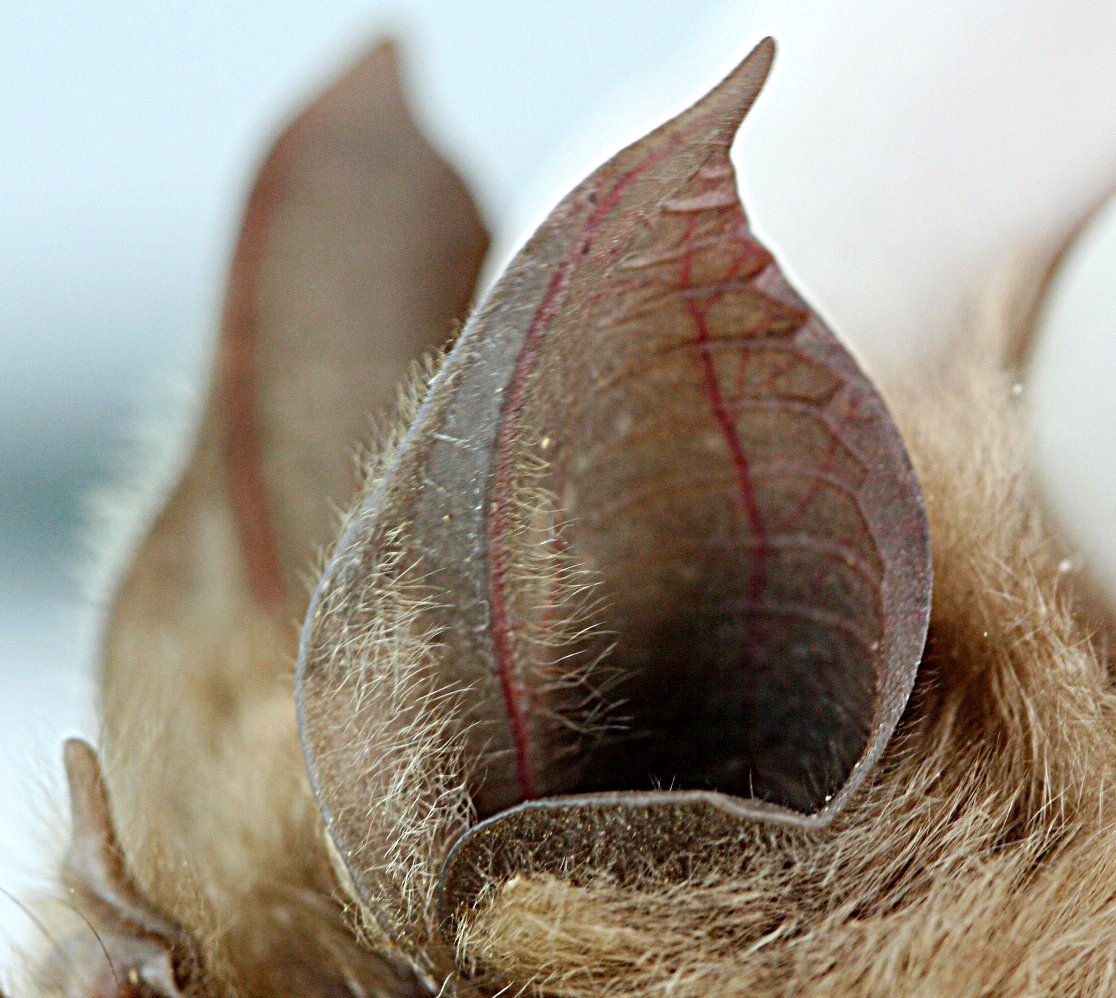
Mittu Pannala – mpannala@vt.edu
Ojili Praveen Kumar Reddy – opkreddy@vt.edu
Sajjad Z. Meymand – sajjadzm@vt.edu
Rolf Mueller – rolf.mueller@vt.edu
Dept. of Mechanical Engineering,
Virginia Tech,
IALR,
150 Slayton Ave.,
Danville, VA 24540
Popular version of paper 5aAB14
Presented Friday morning, November 4, 2011
162nd ASA Meeting, San Diego, Calif.
The goal of our research is to learn from bats and mimic them to design a smart dynamic structure to enhance the function of microphones. Some bat species can change the shape of their ears, which may help them to extract more information from incoming sounds. In contrast to this, typical microphones in use today do not make use of changing their physical shapes. Our research aims at introducing changes in physical shape to the design of microphones with enhanced sensing capabilities.
Bats are well known for their ability to get around with sonar. This involves emitting ultrasound, mostly inaudible to human ears, receiving echoes, and processing these echoes to understand even very complicated soundings such as dense tropical rainforest.
Horseshoe bats are a group of bats that live in the old world and have evolved a particularly sophisticated sonar system that allows them to hunt for airborne insect prey in dense forest environments. A conspicuous component of the sonar systems of horseshoe bats are the outer ears. Unlike humans and most other mammals, horseshoe bats can change the shape of their ears with the help of many, highly specialized muscles.
When probing their environments with their ultrasonic pulses, horseshoe bats can use their unique ear muscles to deform the shapes of their ears in a cycle fashion. Within one tenth of a second, the ear of a horseshoe bat can go from one extreme configuration to another. The time interval of these ear shape changes is hence about two to three times shorter than the blink of the human eye.
Our research tries to reproduce these fast configuration changes in a device that mimics biology. We want to use this device to investigate if novel principles for the engineering of smart sensory systems can be discovered from the reproduction of biology.

“Figure 1: Greater Horseshoe Bat Ear”
To manufacture the artificial shape-shifting ears, we used synthetic rubber sheets – made from a material that is similar to that of the tubes in bicycle tires. Our artificial ears mimic several features found in the ear shapes of bats, but have been simplified to facilitate analysis. The overall shape of the simplified artificial ears is that of an obliquely truncated cone, not unlike an ice cone with a deep clean bit on one site. However, to insure that we didn't miss important functional aspects, we have introduced some local shape elements such as cuts in the rim and surface ridges that are commonly seen in bat ears. Altogether, we have produced twelve different ear shapes that allow us to test the effects of the various combinations of the local shape features.

“Figure 2: Manufacturing of artificial ear shapes from a flat sheet of rubber”
To imitate the changes in ear shape, we have used a simple actuation mechanism: a motor coupled with a lever pushes the top of the ear with a small force at an inclined angle. The effect of the ear deformations were tested with an experimental setup that mimics a bat receiving ultrasonic signals from different directions. A small tube was attached to artificial ear to mimic an ear canal and the ultrasound signal at the end of the tube was recorded with a small measuring microphone. Using a computer-controlled setup, the artificial ear was rotated to test its effects on sound impinging from a wide range of different directions. The results were documents in maps that show a spatial pattern of hearing sensitivity that changes with the deformation of the ear. The presence of strong, non-random patterns in the effect of ear deformation on spatial hearing sensitivity leads us to believe that our device could have useful functional features.

“Figure 3: Shape variations in the artificial ear shapes.”
Our future work, will explore these patterns and their relationship with the physical shape of the deforming ear. We would like to use these insights to design smart, adaptable sensory systems that help us extract valuable information about environments that are just as complicated as those in which the horseshoe bats thrive.

“Figure 4: Artificial Ear Prototype – Upright and Bent positions”